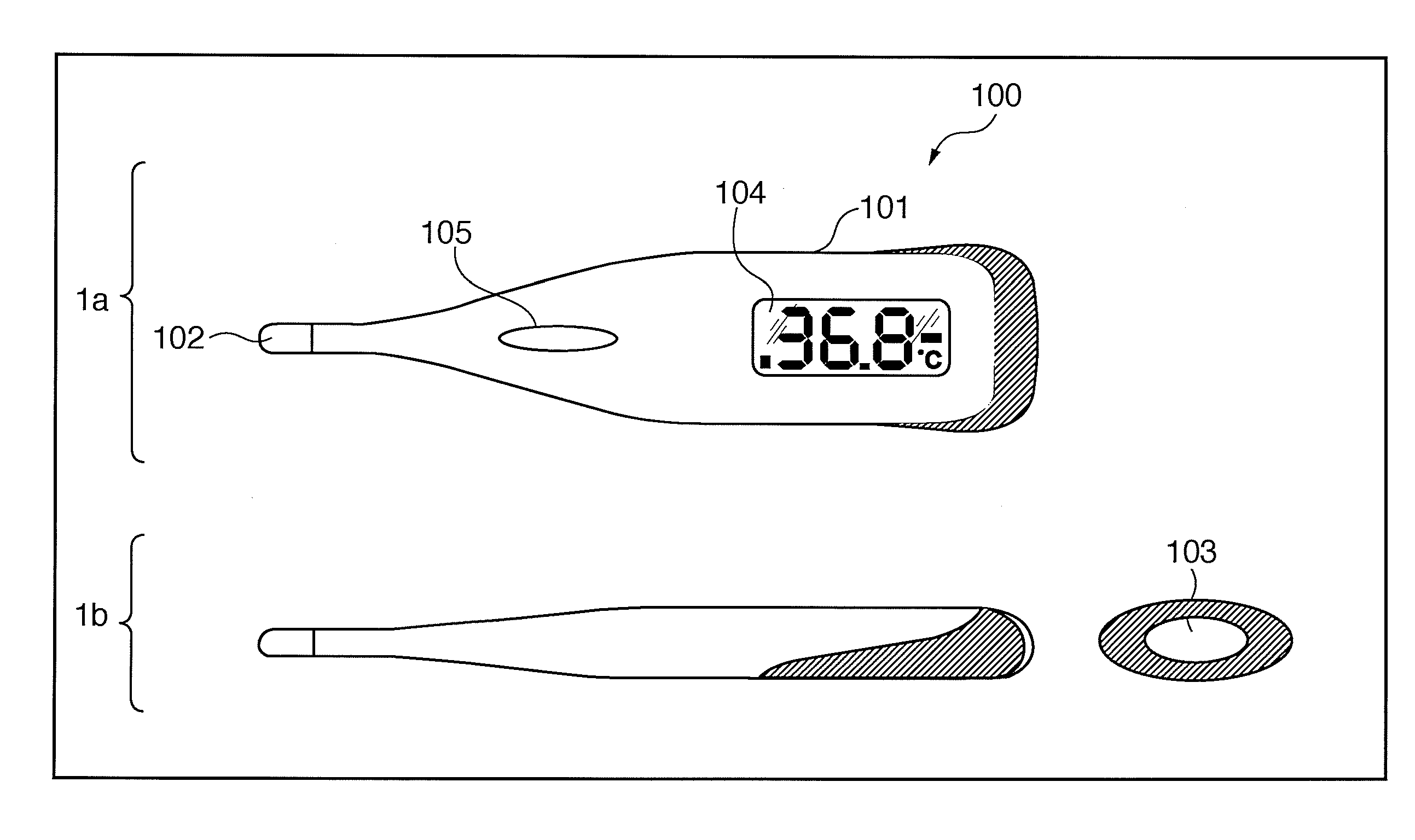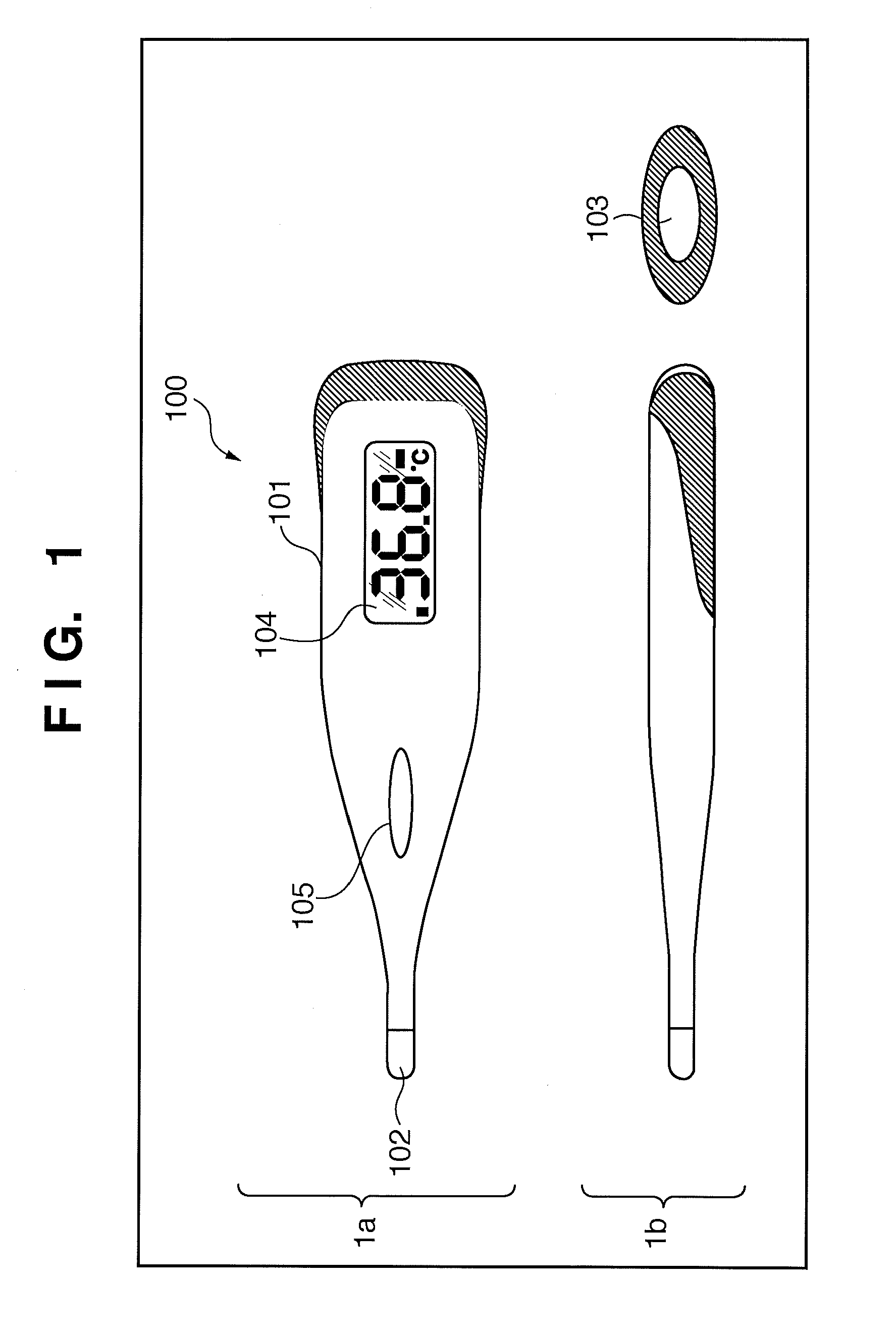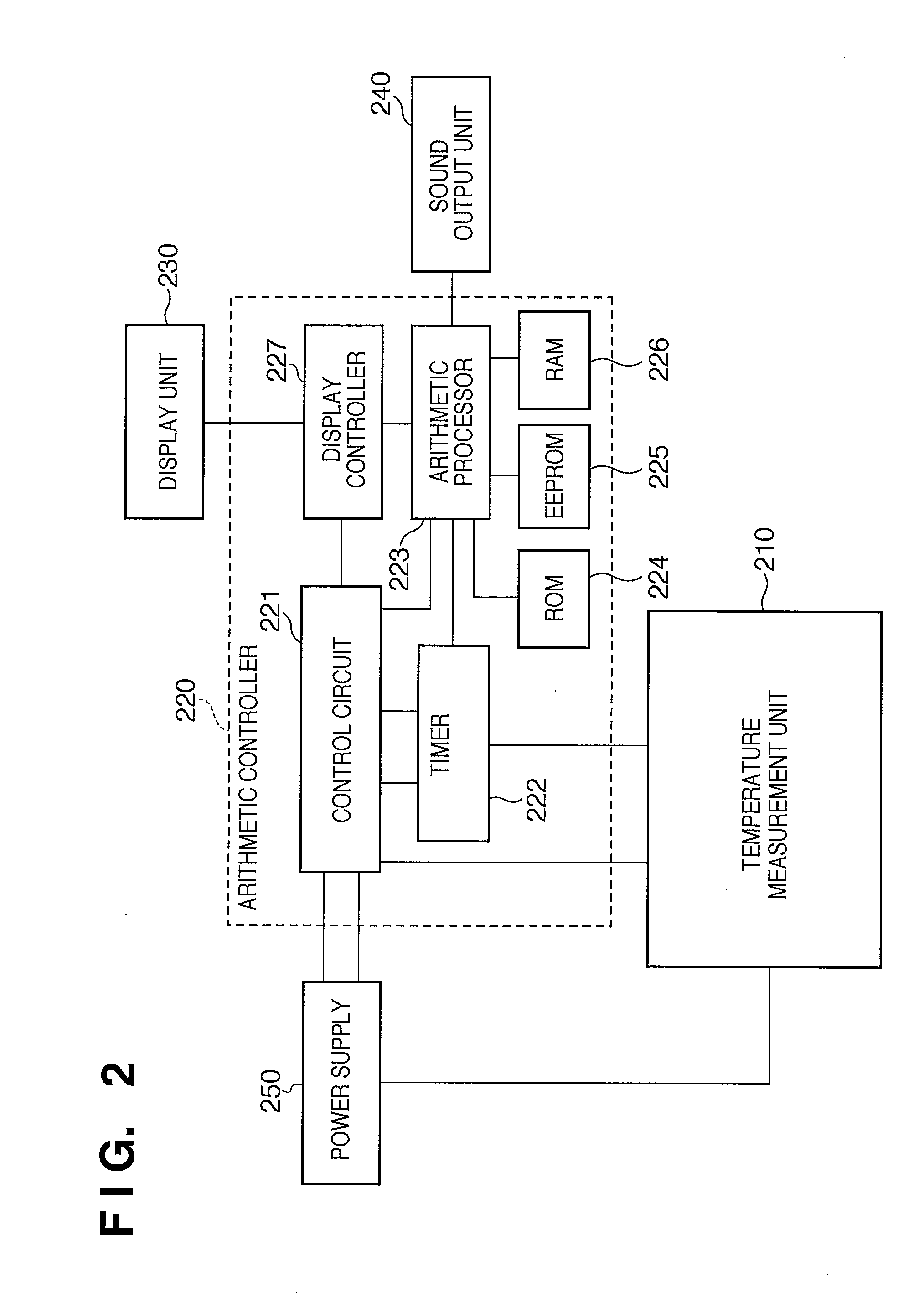Electronic clinical thermometer and operation control method
a technology of operation control and thermometer, which is applied in the field of electronic clinical thermometer, can solve problems such as errors, and achieve the effect of high measurement accuracy
- Summary
- Abstract
- Description
- Claims
- Application Information
AI Technical Summary
Benefits of technology
Problems solved by technology
Method used
Image
Examples
first embodiment
[0027]
[0028]FIG. 1 is a view showing the outer appearance of an electronic clinical thermometer 100 according to an embodiment of the present invention. 1a of FIG. 1 is a plan view, and 1b of FIG. 1 is a side view. Reference numeral 101 denotes a main body case containing electronic circuits such as an arithmetic controller 220 (to be described later), a battery (power supply) 240, and the like.
[0029]Reference numeral 102 denotes a metal cap made of stainless steel and containing, for example, a thermistor (to be described in detail later) for measuring the temperature. Reference numeral 103 denotes a power ON / OFF switch. The power supply is turned on when the switch 103 is pressed once, and turned off when the switch 103 is pressed again.
[0030]Reference numeral 104 denotes a display unit that displays the body temperature of an object; and 105, a sound output unit that outputs a sound based on processing in the arithmetic controller 220.
[0031]
[0032]FIG. 2 is an internal block diagr...
second embodiment
[0104]In the above-mentioned first embodiment, one temperature measurement process is completed by repeating the charge / discharge of the capacitor four times immediately after the temperature measurement process is started. However, the present invention is not limited to this. For example, it is also possible to complete one temperature measurement process by repeating the charge / discharge of the capacitor three times.
[0105]More specifically, it is possible to set the charge sequence such that first time: reference resistance element, second time: reference resistance element, and third time: thermistor, and calculate temperature data by comparing a second discharge time Tref1 with a third discharge time Tth, without using a first discharge time Tref0.
[0106]Alternatively, it is also possible to set the charge sequence such that first time: reference resistance element, second time: thermistor, and third time: reference resistance element, and calculate temperature data by using the...
third embodiment
[0107]In the above-mentioned first embodiment, one temperature measurement process is completed by repeating the charge / discharge of the capacitor four times immediately after the temperature measurement process is started. However, the present invention is not limited to this. For example, it is also possible to complete one temperature measurement process by repeating the charge / discharge of the capacitor after the voltage drop of the power supply caused by the repetitive measurement of the discharge time has converged within the range of a predetermined threshold value.
[0108]FIG. 9 is a flowchart showing the procedure of a temperature measurement process according to this embodiment. FIG. 10 is a graph showing the change in voltage across a capacitor 403 with time, and the change in output digital signal from an A / D converter 420 with time. The procedure of the temperature measurement process according to this embodiment will be explained below with reference to FIGS. 9 and 10.
[0...
PUM
| Property | Measurement | Unit |
|---|---|---|
| temperature | aaaaa | aaaaa |
| time | aaaaa | aaaaa |
| time | aaaaa | aaaaa |
Abstract
Description
Claims
Application Information
 Login to View More
Login to View More - R&D
- Intellectual Property
- Life Sciences
- Materials
- Tech Scout
- Unparalleled Data Quality
- Higher Quality Content
- 60% Fewer Hallucinations
Browse by: Latest US Patents, China's latest patents, Technical Efficacy Thesaurus, Application Domain, Technology Topic, Popular Technical Reports.
© 2025 PatSnap. All rights reserved.Legal|Privacy policy|Modern Slavery Act Transparency Statement|Sitemap|About US| Contact US: help@patsnap.com



